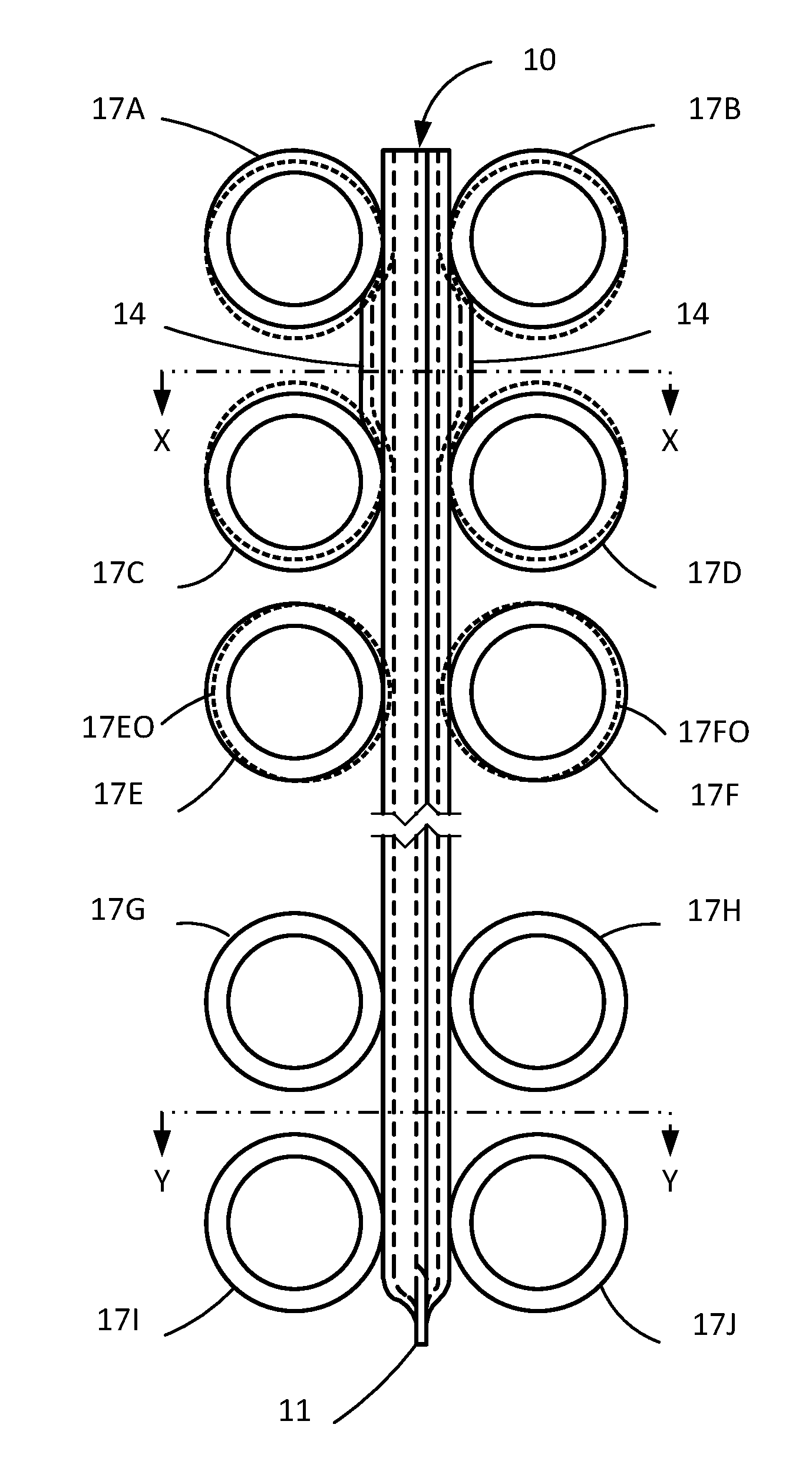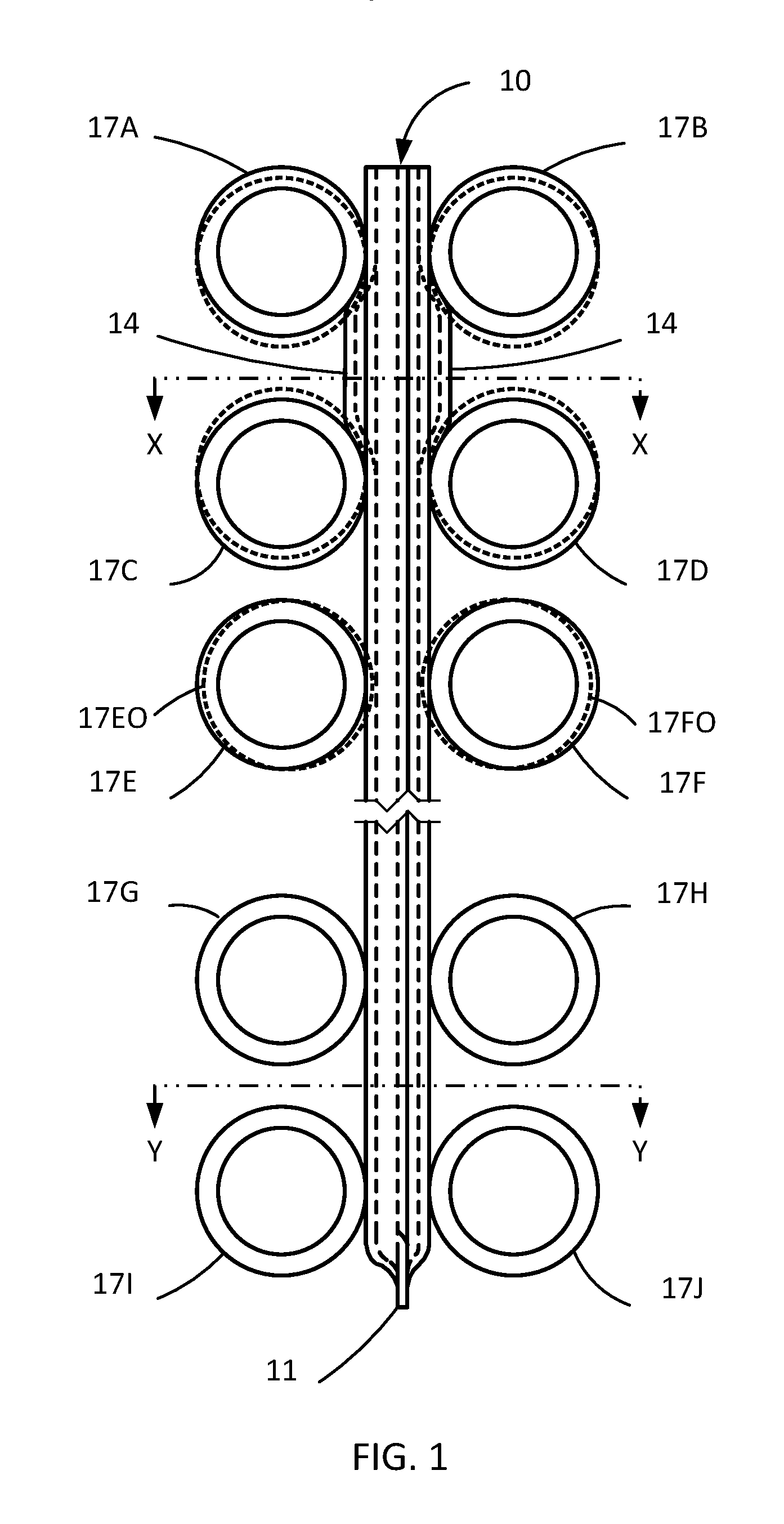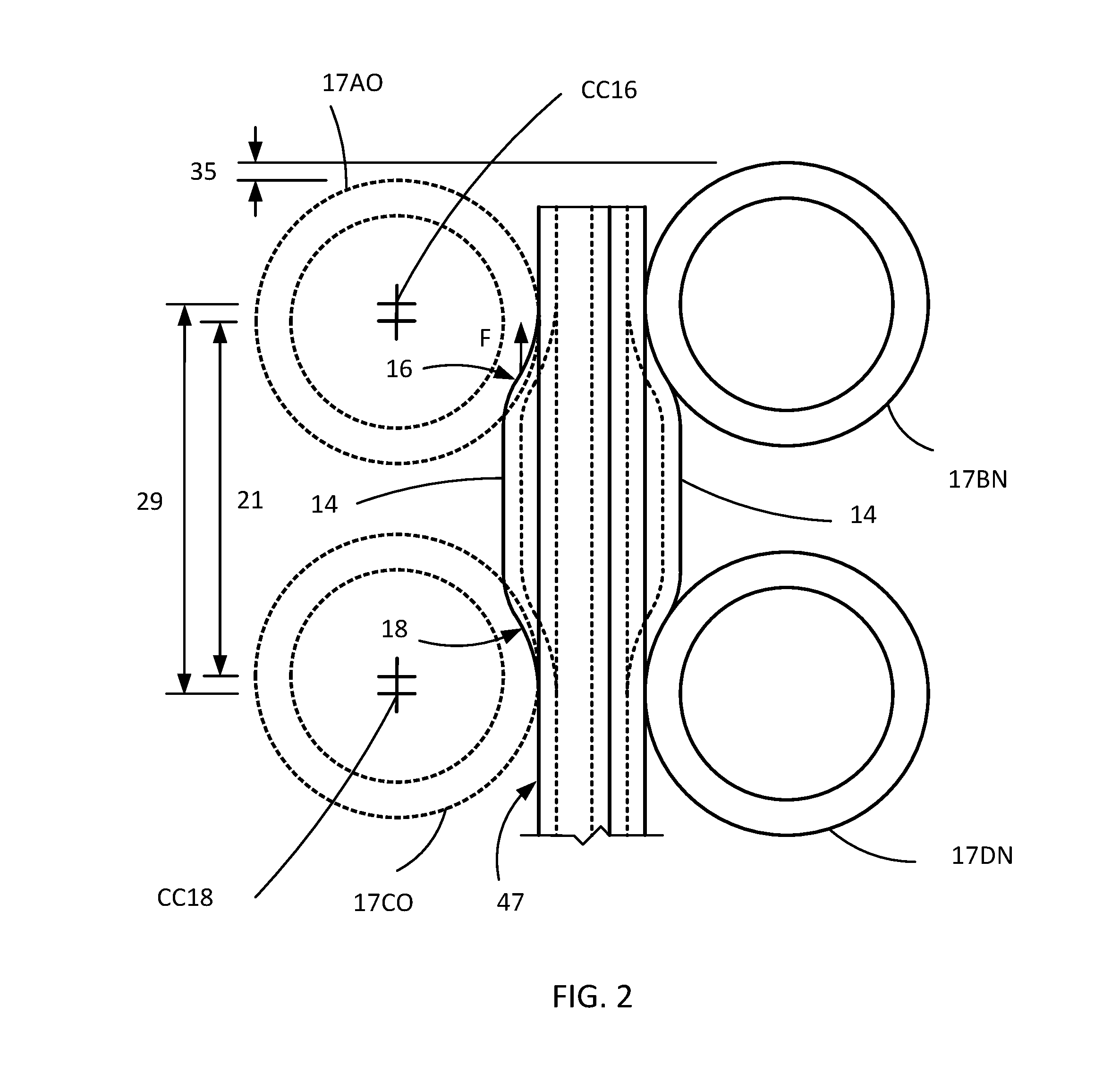Tube support for vibration mitigation
a technology of supporting devices and tubes, applied in the direction of stationary tubular conduit assemblies, indirect heat exchangers, lighting and heating apparatus, etc., can solve the problems of tube failure, tube vibration, and unstable eddies, and achieve the effect of less vibration and more rigidity
- Summary
- Abstract
- Description
- Claims
- Application Information
AI Technical Summary
Benefits of technology
Problems solved by technology
Method used
Image
Examples
Embodiment Construction
[0032]The tube support or stake device of the present invention provides direct and robust support to the tubes on both sides flanking the stake. In its preferred embodiment the stake has an effective thickness that is greater than the spacing between the tubes to account for the clearance between the tubes and the holes in the baffles as well as to account for the slight warping of the tubes.
[0033]The length of the stake may be selected to satisfy the number of tubes requiring such support based on the estimated vibration damage potential. In fact, in some regions, such support may be needed across the entire tube bundle while some other regions may require support only to a depth of several tube rows. If necessary, the stake may extend across the entire bundle cross-section, but insertion of the stake would be somewhat easier if the stake length is limited to a maximum equal to the bundle radius.
[0034]Since the stake deflects all of the tubes that it comes in contact with, for the...
PUM
 Login to View More
Login to View More Abstract
Description
Claims
Application Information
 Login to View More
Login to View More - R&D
- Intellectual Property
- Life Sciences
- Materials
- Tech Scout
- Unparalleled Data Quality
- Higher Quality Content
- 60% Fewer Hallucinations
Browse by: Latest US Patents, China's latest patents, Technical Efficacy Thesaurus, Application Domain, Technology Topic, Popular Technical Reports.
© 2025 PatSnap. All rights reserved.Legal|Privacy policy|Modern Slavery Act Transparency Statement|Sitemap|About US| Contact US: help@patsnap.com



